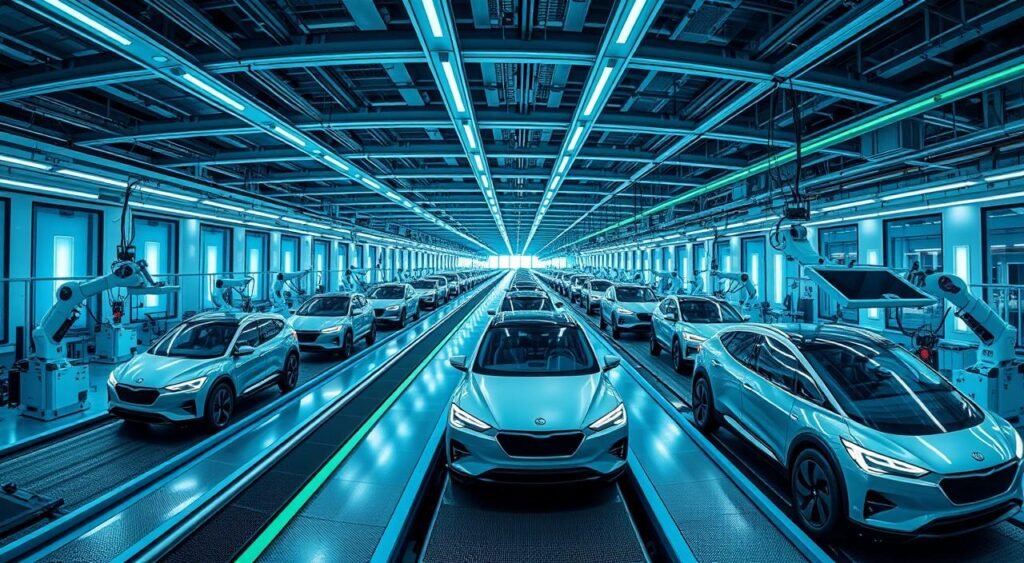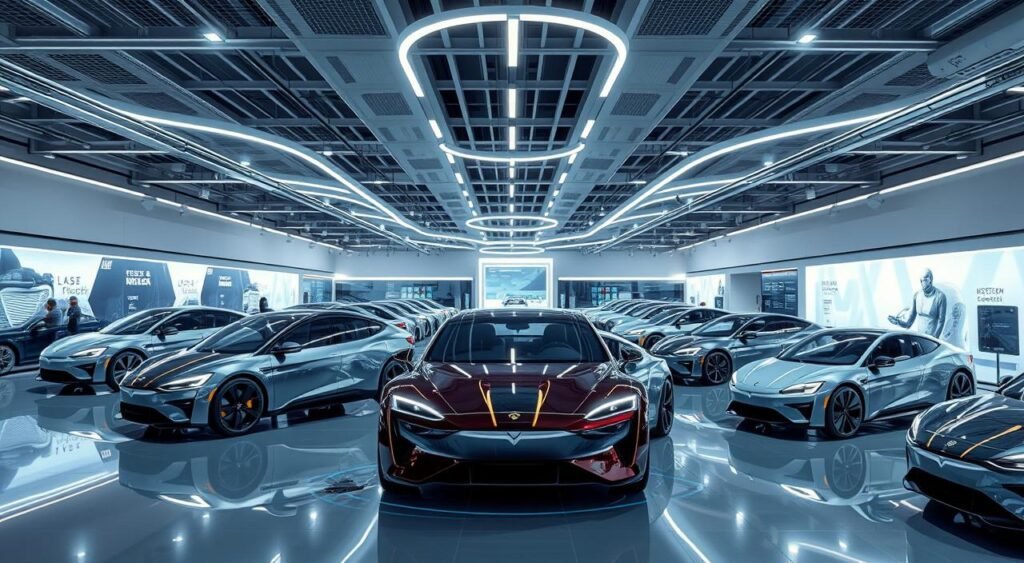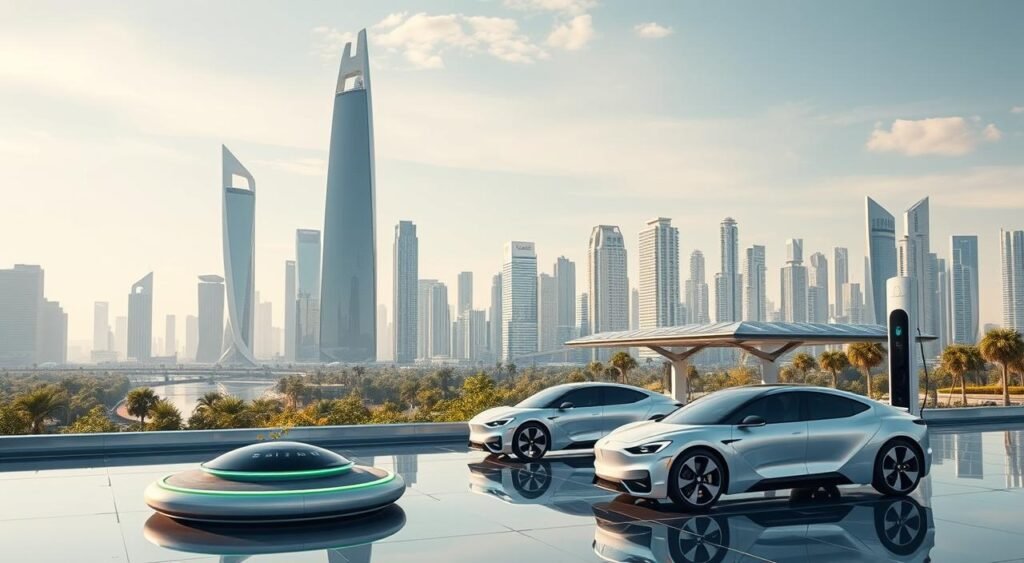Hello there. Joca de Fredy at the keyboard. I remember, not too long ago, attending auto shows where Electric Vehicles Market were treated like quirky science fair projects. They were tucked away in corners, boasting laughable ranges and designs only an engineer could love.
Today, they are the main event. But the conversation has changed. The initial wide-eyed optimism has been replaced by the gritty reality of mass adoption. As a journalist who’s been on the front lines of this shift, I can tell you that to truly understand the automotive world in 2025, you must have a firm grasp of the core electric vehicles market trends, because they are no longer a niche—they are the driving force of the entire industry.
The Great Affordability Reckoning: The Most Crucial of All Electric Vehicles Market Trends
For years, the story of EVs was one of premium performance and early adopter enthusiasm. Teslas with “Ludicrous Mode,” Porsches with electrifying speed. It was fantastic for headlines, but it did little to address the single biggest barrier to mass adoption: the price tag. In 2025, the most dominant market trend is the brutal, relentless push for affordability.
I’ve spoken with dozens of executives and engineers, and the message is unanimous: the next phase of growth won’t come from 0-60 times; it will come from getting the starting price under the $30,000 mark for a capable, no-compromises vehicle. This isn’t just a wish; it’s a survival strategy.
The LFP Battery Revolution: A Deep Dive into this Market Trend
The secret weapon in this price war is the battery chemistry. For a long time, the go-to was NMC (Nickel Manganese Cobalt). It’s energy-dense and powerful, but its core materials are expensive and plagued by supply chain and ethical concerns (especially cobalt).
Enter LFP (Lithium Iron Phosphate). I saw the first LFP-powered models from Chinese manufacturers years ago and knew it was a game-changer. Iron and phosphate are abundant and cheap. The cells are more stable and offer a longer lifespan in terms of charge cycles. Their downside? Lower energy density, meaning less range for the same weight.
But the technology has improved dramatically. Automakers are now cleverly packaging LFP batteries to deliver perfectly acceptable “standard range” models with 250-300 miles (400-480 km) of real-world driving. Think about it: this is more than enough for over 95% of daily driving needs. Ford, Tesla, and Volkswagen are all heavily invested in LFP for their entry-level vehicles. This isn’t just a cost-cutting measure; it’s a strategic pivot that defines the current electric vehicles market trends.
The Onslaught of Value-Focused Brands
You can’t discuss affordable EVs without talking about the global impact of Chinese automakers like BYD, MG (owned by SAIC), and others. In late 2023, BYD surpassed Tesla in global EV sales for a quarter, and that wasn’t a fluke; it was a sign of things to come. These companies mastered LFP technology and large-scale manufacturing years ago. Now, they are expanding aggressively into Europe, Southeast Asia, and South America, forcing legacy automakers in those regions to either compete on price or risk losing the entire entry-level market.
Infrastructure Anxiety: The Persistent Hurdle for EV Market Growth
A cheap EV is useless if you can’t charge it. While the situation has improved, charging infrastructure remains a massive point of friction and one of the most complex electric vehicles market trends to solve.
I have a simple rule when testing EVs: I rely only on public charging for a week. It’s often a frustrating experience. Broken chargers, confusing payment systems, long queues—these are the real-world problems that cause hesitation among potential buyers.
Standardization Saves the Day: The NACS Story
One of the most positive developments has been the near-universal adoption of Tesla’s charging connector, now called the North American Charging Standard (NACS). I remember the “connector wars” well—it was a chaotic mess of CHAdeMO, CCS, and Tesla’s proprietary plug. By 2025, nearly every major automaker has committed to adopting NACS for its North American models starting around now or in 2026. This is a monumental win for consumers. It simplifies the experience and opens up Tesla’s vast Supercharger network to millions of non-Tesla vehicles, effectively doubling the reliable fast-charging options overnight.
Beyond the Public Charger: A Home and Grid Trend
The real convenience of EV ownership, as I’ve found over years of driving them, is home charging. Waking up every morning with a “full tank” is a luxury that changes your relationship with your car. The current trend is moving beyond simple charging. We’re seeing a huge rise in smart chargers that integrate with home energy systems.
Even more exciting is the emergence of Vehicle-to-Grid (V2G) technology. The idea is simple: during peak demand, your parked car can sell a small amount of its stored energy back to the power grid, helping to stabilize it. You get paid, and the utility gets a distributed power source.
Ford’s F-150 Lightning offered a version of this with its Vehicle-to-Home capability, and now we’re seeing it become a major selling point. This transforms the car from a mere transportation device into an active asset in the energy ecosystem, a truly forward-thinking market trend.

The Software-Defined Vehicle: A Core Pillar of Modern Electric Vehicles Market Trends
The shift from internal combustion to electric motors was just the beginning. The real revolution is the transformation of the car into a software platform—a powerful computer on wheels.
I’ve been in the industry long enough to remember when a car’s features were fixed the day it left the factory. That era is over. Today, thanks to robust over-the-air (OTA) updates, a vehicle can improve over time. It can get more range, a faster interface, or entirely new features while it’s parked in your garage.
This is a fundamental shift in how value is created and perceived. The user experience (UX) of the central touchscreen—its speed, intuitiveness, and features—is now as important as the car’s handling or horsepower. Companies are no longer just selling hardware; they are selling a continuously evolving service. This has given rise to a controversial but growing trend: feature subscriptions.
Want heated rear seats in the winter? Activate them for a month. Need a specific advanced driver-assist feature for a long road trip? Pay to unlock it. It’s a model I have mixed feelings about, but it’s undeniably one of the defining electric vehicles market trends of the mid-2020s.
The Geopolitical Chessboard: How Nations Are Shaping the EV Market
You cannot analyze the electric vehicles market trends without looking at the global political landscape. The transition to EVs is not just an environmental goal; it’s a battle for industrial dominance.
- China’s Dominance: China is, without a doubt, the global leader. They control vast portions of the battery supply chain, from raw material processing to cell manufacturing (CATL and BYD are the two largest battery makers in the world). Their domestic market is massive, fostering intense competition that has accelerated innovation and driven down costs.
- The American Response (IRA): The U.S. Inflation Reduction Act (IRA) of 2022 was a cannon shot in this economic war. By providing significant tax credits for EVs assembled in North America with batteries sourced from specific partner countries, it’s forcing a massive, and painful, onshoring of the supply chain. I’ve seen firsthand how it has spurred billions in investments in new battery plants across the US.
- Europe’s Tightrope Walk: Europe is caught in the middle. It has aggressive environmental targets but is highly dependent on both Chinese batteries and the strength of its own legacy automakers, like Volkswagen and Stellantis. They are trying to build their own battery gigafactories while facing a flood of affordable and high-quality EVs from China, creating immense political and economic tension.
Looking Ahead: What’s Next on the Horizon?
So, what’s the next chapter? Based on my briefings and analysis, the next five years will be less about moonshots and more about refinement and scaling.
- Solid-State Batteries: This is the technology everyone is waiting for. They promise faster charging, greater energy density, and superior safety compared to current liquid-electrolyte batteries. I’ve seen the prototypes, and the potential is staggering. However, mass production is still proving incredibly difficult. Don’t expect them in your mainstream family EV before 2030. They will appear first in high-end luxury models.
- Market Consolidation: The era of easy venture capital funding for EV startups is over. We’re in a shakeout period. Companies with solid manufacturing capabilities, a clear path to profitability, and a unique selling proposition will survive. Others, I’m afraid, will be acquired or will disappear.
- Diversification of Models: Finally, we’re seeing a welcome diversification beyond sedans and SUVs. Electric pickup trucks are becoming more common, commercial electric vans are a booming business for logistics companies, and we’re even seeing the first serious concepts for electric RVs and other recreational vehicles.

In closing, the electric vehicles market trends of 2025 are defined by a move from pioneering to pragmatism. The battle is now being fought in the trenches of affordability, charging reliability, and software usability. The transition is real, it’s messy, and it’s happening faster than any other shift in the auto industry’s history. It’s a complex, fascinating, and at times frustrating space, and you can be sure I’ll be here, tracking every development for you.
